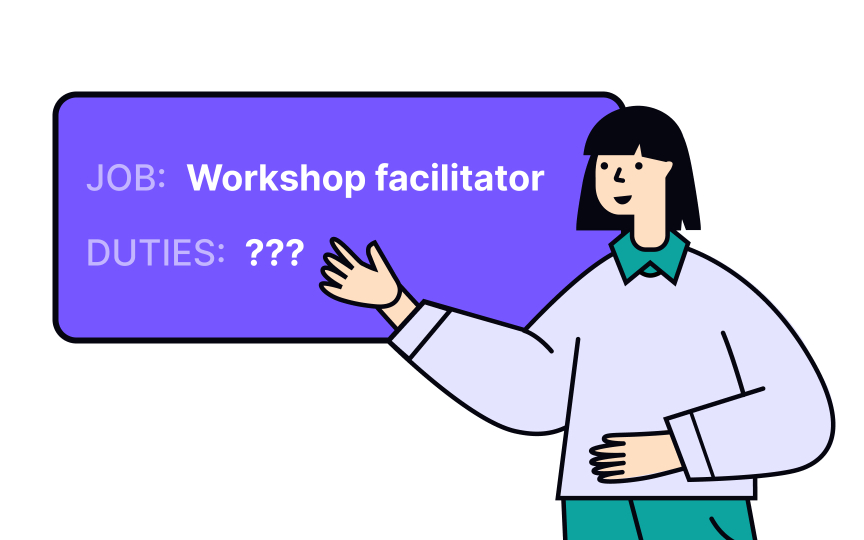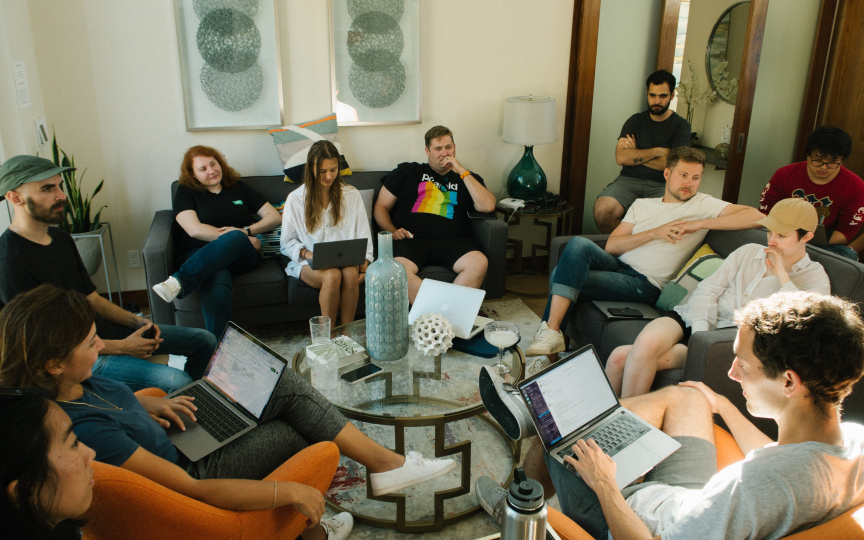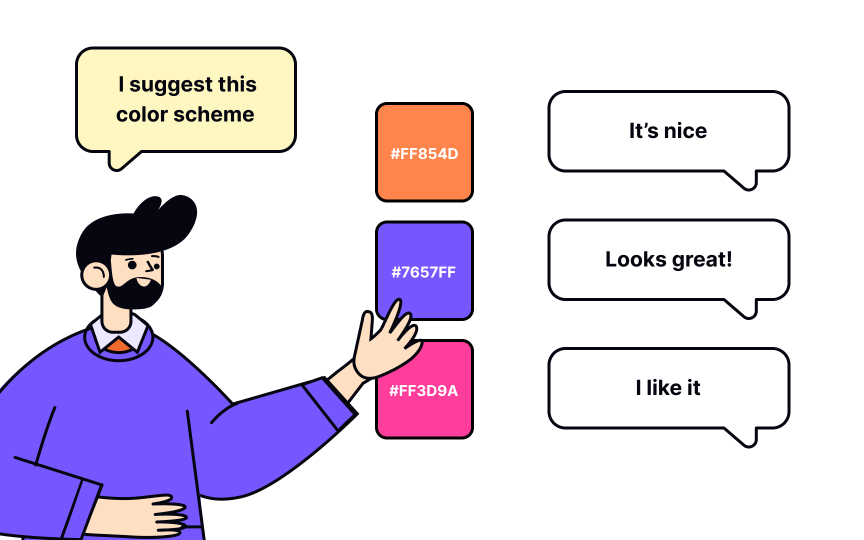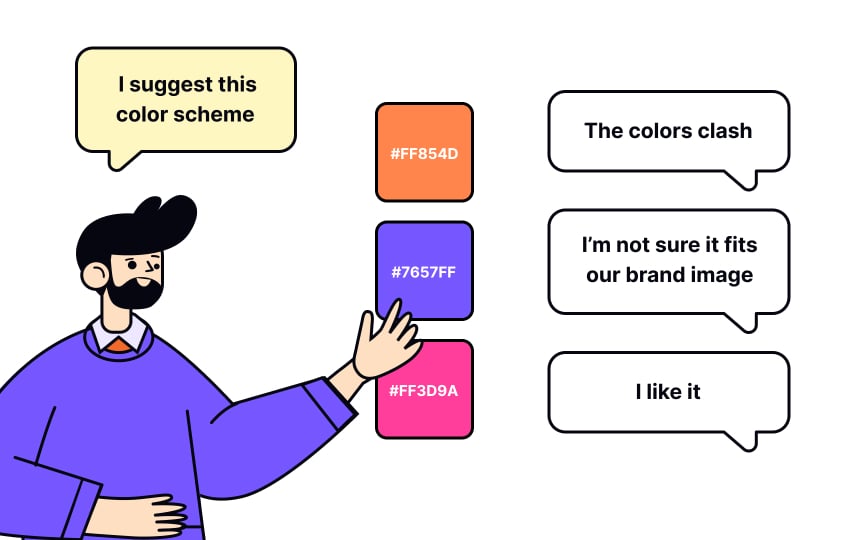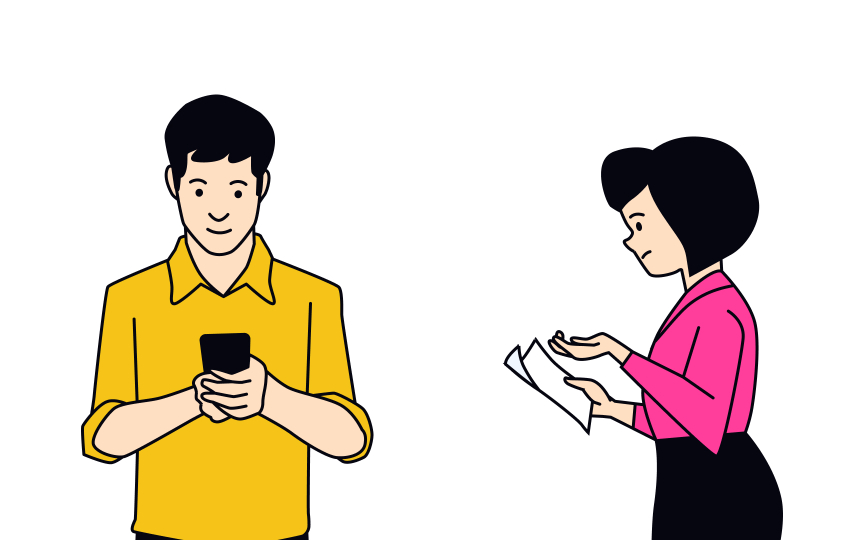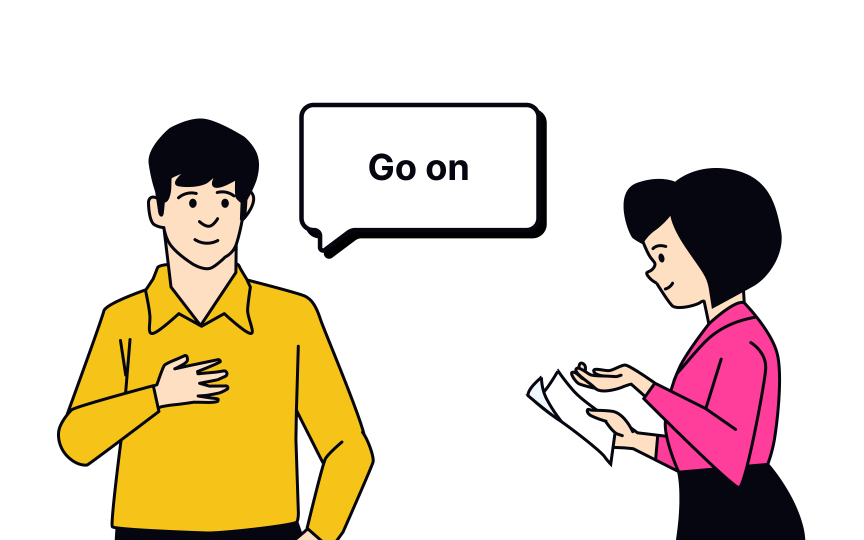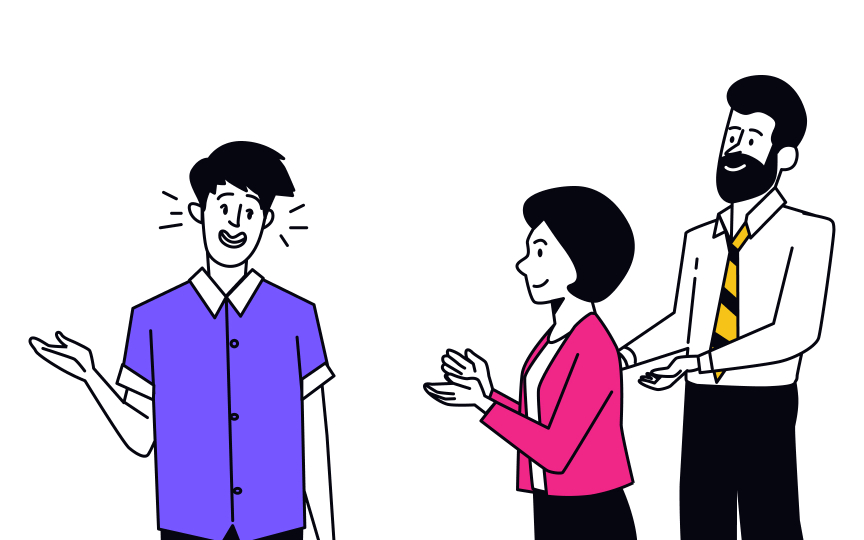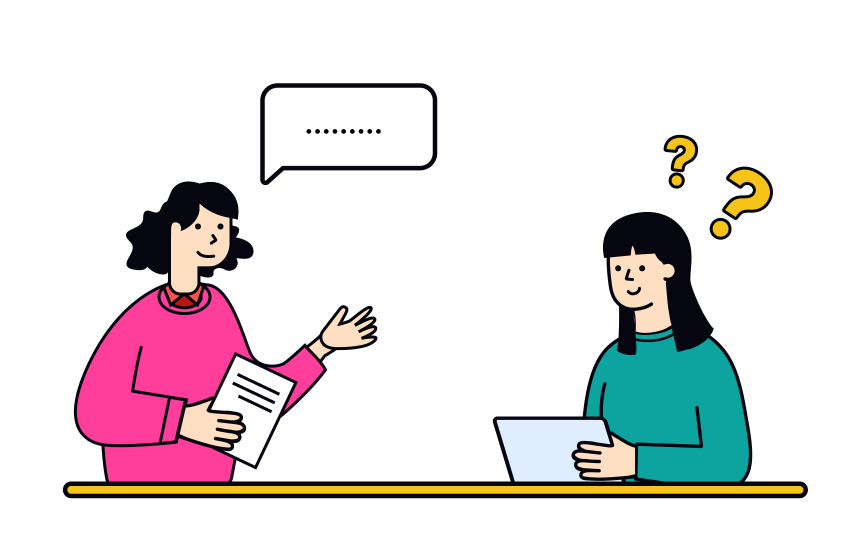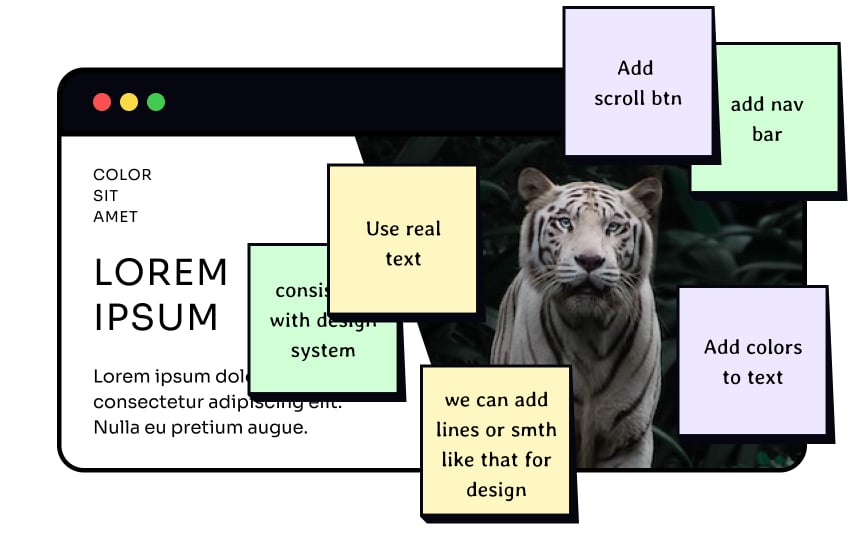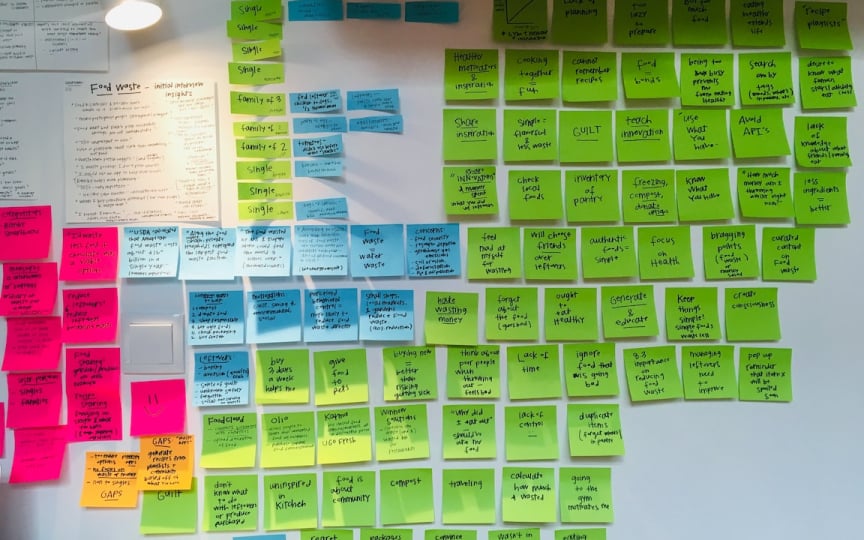Design Workshop Facilitation Techniques
Go over crucial facilitation techniques you'll need to manage different people and handle different outcomes
As a workshop facilitator, your main aim is to stimulate constructive discussion. To do so, you need to figure out a way for people to share their ideas, collectively decide what's great, and leave out ideas that wouldn't work.
Naturally, you’ll need to learn some tricks to manage people and tackle different situations effectively. Keep in mind that facilitation techniques are mostly people skills.
The facilitator's job is to create an environment where the group can reach its full potential. This means making it conducive for people to come up with their best ideas to reach the workshop's goal.
Facilitators are decision-making experts and good problem solvers. But, more importantly, they prioritize the group outcome as a whole. Their toolkit includes materials, activities, and facilitation techniques that can help make the workshop productive, participative, friendly, cooperative, and fun.
Get a meeting room or space booked for your workshop as soon as you can. Look for bigger rooms with plenty of space to walk around — you'll need room to divide participants into smaller groups and interact with them.
Make sure that the seating is comfortable and the lighting is good. Smaller tables are preferable as they are easy to rearrange for different activities.
Most importantly, ensure that you have space to write things down or put up sticky notes. This can be in the form of a big whiteboard, glass doors, or wall space.
Pro Tip: Having a projector and screen in the room is a big plus. If not, there are also portable models you can bring with you.
Post-pandemic, many companies switched to flexible working or working from home. This means that you might need to facilitate your design workshops online.
Remote workshops have a number of challenges. Common problems include difficulties creating a strong emotional rapport, low engagement, distractions, and technical difficulties. On the plus side, taking your meeting online can save travel time and money for your organization and, in the case of long-distance travel, benefit the environment.
Shared workspace canvases like Miro, FigJam, Mural, and others can help you think visually. Scheduling tools like Calendly or Rally make it easier to find the best time to meet with everyone on your team. Tools like SurveyMonkey and TypeForm are great for getting feedback.[1]
The Nielsen Norman Group lists 3 essential steps to take when planning remote workshops:
- Prepare files in advance with tools that your team is comfortable with using.
- Make time for team building and warm-ups, and plan extra time for each workshop activity. Run an asynchronous workshop if your team does not have time for a synchronous session.
- Clearly communicate expectations and goals before, during, and after the workshop with written reminders, invitations, and verbal reminders.[2]
When establishing discussion rules within the workshop, make it clear that you welcome negative feedback. It's crucial for the validation and elaboration of ideas.
Every design process starts with an idea. The idea goes through a lot of refining before it becomes the final solution. Different members of the team review the project and try to make them better.
With disagreements or conflict, ideas can grow from a simple spark to a full-fledged design. The team works together to justify all the decisions to execute a project. Conflict also helps elaborate ideas. When disagreeing about an idea, designers can force each other to fill in all the missing details in the design.
At the end of a conflict, the final decisions made should be tested and clarified to the satisfaction of everyone involved. Everyone doesn't need to agree on everything. The goal is to reach a consensus where all participants understand the decisions made and the rationale behind them.
When conflicts arise, embrace them. Friction of any kind is simply a result of diverse personalities and opinions. Your job as a facilitator is to steer it in a constructive direction. When dealt with well, workshop discussions build team trust and lead to positive forward movement.
Nancy Settle-Murphy, a professional facilitator, offers these tips on how to deal with divergent perspectives:
- Encourage candid opinions. Instead of asking, "Anyone not on board with Jen's proposal?" try something like, "Are there any concerns about how it will affect the final result?"
- Recognize real dissent when you hear it. Distinguish between genuine doubts vs. indirect denial ("This idea is good enough but…"), rebellion ("I don't like being led around by others"), or resignation ("I will agree, but I won't participate").
- Don't punish those who disagree. Use your tone and words to convey genuine curiosity when someone offers a different viewpoint. This will often lead to a discussion where team members realize they are more in alignment than previously imagined.
- Close the discussion when it stops being constructive. You can schedule a later meeting, empower someone to make the final decision, or propose a compromise.[3]
A good facilitator is a great listener. The most obvious advantage of active listening is that it allows you to get and understand information more efficiently. But there's another crucial benefit — being heard motivates people. Your paying attention encourages participants to bring out their best ideas.
Here are some tips to help you become a better listener:
- Focus on the conversation and give your full attention to the speaker.
- Pay attention to body language — the same sentence said with different facial expressions can have the opposite meaning.
- Give encouraging verbal cues to show that you are listening: "Yes, I see," "Mmhmm," or "I understand" are some examples.
- Clarify and paraphrase information — this will ensure that you fully understand someone’s point.
- Ask questions. Open-ended questions like "Tell me more about this idea" show interest. Clarifying questions like "Do you mean that ...?" ensure you have heard the correct information.
- Refrain from judgment. The feeling of being judged doesn't encourage people to open up.[4]
When you start organizing workshops, you'll notice how differently people behave in meetings. Some people dominate the conversation, easily sharing what's on their minds. Others tend to keep quiet unless asked directly.
A person's style of socializing doesn't say anything about the quality of their ideas. To get balanced input from everyone, encourage shyer people to speak up. Here are some tips on how to do that:
- Balance the contributions. Some participants may not contribute for fear of being cut off. To avoid that, make sure everyone has time to voice their opinion. You can do it by asking people to speak in turns or by requesting a specific number of contributions from everyone.
- Remove verbal contributions. Some participants may have brilliant ideas but not feel comfortable speaking in public. If you want their opinions, you might need to remove the need for talking. For example, ask everyone to write their ideas on sticky notes and silently put them on the board, then lead the discussion based on these ideas.[5]
Intentional silence is an excellent tool in a facilitator's toolkit. Research shows that English speakers feel uncomfortable with silence longer than 4 seconds in a conversation.[6] We try to fill these silences to form social connections.
Silence works in two ways:
- It invites response and signals interest
- It encourages people to think deeper and add details to their answers
Silences work exceptionally well with shyer participants. For example, in a situation where everyone gets asked their opinion one by one, not every person responds with the same speed. If you don't get an answer immediately, don't hurry to ask the next person. Instead, allow the participant to gather their thoughts and show that you are listening.
How can you do that? Don't say anything or even nod; just maintain eye contact. If you can't resist filling the silence, gently invite the participant to elaborate with phrases like "Tell me more about that" or "What did you think about that?"
Pro Tip: Four seconds are longer than they feel. To create a 4-second silence, count to 7 in your head. If you must do something, take a sip of water while continuing counting.
Prepare for the fact that things WILL go wrong. Even if you’ve facilitated the same workshop before, new participants won't necessarily behave like earlier ones.
Some activities could take longer; others might finish sooner than planned. You might mess up giving instructions, or participants could be unenthusiastic. You might plan to use the results of one activity in the next one, only to have the first activity tank. You could mistakenly bring permanent markers instead of whiteboard markers, or the projector you counted on could break down — the possibilities for mishaps are endless.
You need to be able to change plans on the go and improvise. One way is to prepare alternative activities as you plan. Having a facilitator's library on hand will give you a great advantage. Browse the document during the workshop to choose from the list of activities that better suit your situation. With time and practice, you'll be able to do it with just your memory.
A workshop parking lot is a space where you can save ideas that can't be addressed at the moment. It can either be tangible, like an easel-sized sticky note or whiteboard, or digital, like a Miro board or a Google Doc.
What goes into the parking lot?
- Off-topic ideas you want to address later
- Questions you can't answer right now but are worth researching in the future
- Comments that can't be acted upon during the workshop but can be a great follow-up topic
Ensure that people know that the parking lot will be addressed — using this tool to get rid of unwanted ideas will come across as dismissive. Schedule time to discuss parking lot items at the end of the workshop or in a separate meeting 1-2 days later.[7]
Pro Tip: Separating the parking lot discussion from the original meeting helps people look at ideas from a renewed perspective.
References
- Top Remote Work Software Tools to Innovate & Collaborate - Innovation | Innovation Training | Design Thinking Workshops
- When Remote Workshops Fail | Nielsen Norman Group
- How to Handle Dominating Participants in UX Workshops: 3 Tactics | Nielsen Norman Group
- The Science of Silence: Intentional Silence as a Moderation Technique | Nielsen Norman Group
- Parking Lots in UX Meetings and Workshops | Nielsen Norman Group
Top contributors
Topics
From Course
Share
Similar lessons

Design Workshop Basics

Design Workshop Types

